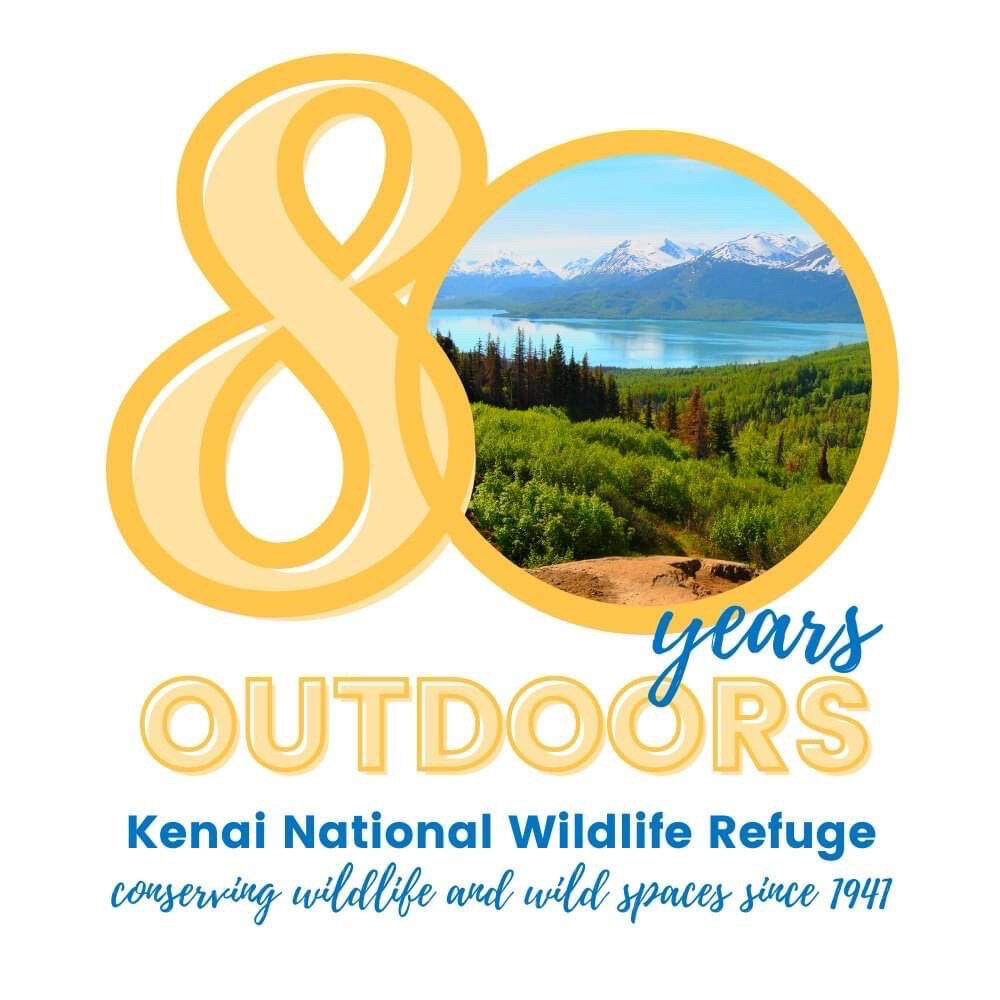Whenever traveling in the Lower 48, I often find myself thinking about what the area I’m visiting was like even as recently as 100 years ago, prior to the remarkable changes most places have undergone in that timeframe. One of the truly wonderful things about most of Alaska is that we don’t have to imagine that. Get out of town a ways, and there she lies right before us in all of her splendor and glory — wild landscapes mostly unchanged from those upon which Alaska’s Indigenous peoples have lived, thrived and traveled for thousands of years.
Just a few weeks ago, on Dec. 16, the Kenai National Wildlife Refuge turned 80. It gave me a reason to reflect on the Kenai Peninsula landscape’s past and present. Eighty years, of course, is a blink of an eye in geologic time, and maybe two blinks in the time people have called this place home.
The refuge encompasses ancestral homelands of the Dena’ina people, who since “time immemorial” have lived and thrived here in no small part because of the area’s rich abundance of salmon and wildlife. The local Dena’ina people, the Kahtnuht’ana, are named for Kahtnu, the Kenai River. The river was the region’s lifeblood, as it remains so today. Their place name for the Kenai Peninsula is Yaghanen, “the good land.”
Fish and wildlife resources have continued to play an important role in our local history. Russian fur traders arrived and established posts near the mouths of the Kasilof and Kenai rivers in the late 1700s. In the years following the purchase of Alaska from Russia by the U.S. government in 1867, commercial fishing took hold. The Alaska Packing Company established the first cannery in Cook Inlet, also at the mouth of the Kasilof River, in 1882.
By the late 1800s, the Kenai Peninsula’s abundant wildlife became more widely known, attracting adventurers from the Lower 48. Dall DeWeese, from Colorado, was one of those. After several successful hunting trips for moose and Dall sheep, he began to advocate for conservation, even writing to President Teddy Roosevelt that the Kenai’s wildlife should be protected.
Grassroots conservation efforts continued in the decades that followed, led by folks like local big game guide Andy Simons, and culminated in President Franklin D. Roosevelt signing Executive Order 8979 establishing the Kenai National Moose Range in December 1941 “ … for the purpose of protecting the natural breeding and feeding range of the giant Kenai moose on the Kenai Peninsula, Alaska.” At that time, our nation was in the process of officially entering World War II, following the bombing of Pearl Harbor just nine days earlier. Here on the western Kenai Peninsula, commercial fishing was still the primary industry; homesteading had been opened only one year earlier, in 1940. The opening of the Sterling Highway (a dirt road initially) was still another 10 years out into the future.
Much has changed on the Kenai Peninsula in the 80 years since the Moose Range’s establishment. Development and growth of local communities accelerated following the discovery of oil near the Swanson River in 1957 and Cook Inlet soon after. Unchanged was the importance of healthy fish and wildlife to the region, underscored by the emergence of a robust tourism industry as new residents and visitors from throughout the world discovered the Kenai’s myriad outdoor treasures.
In 1980, the Alaska National Interest Lands Conservation Act renamed the Moose Range the Kenai National Wildlife Refuge and broadened its purposes to include conservation of all fish, wildlife and habitats in their natural diversity, meeting international treaty obligations, protecting water quality and quantity, providing opportunities for scientific research, environmental education and interpretation, land management training and wildlife-oriented recreation, and protection of its wilderness values. The work of refuge staff has since focused on conducting the science, serving visitors and protecting natural and cultural resources in order to meet all of these purposes.
Marking 80 years of conserving the refuge’s wild landscapes and spectacular fish and wildlife resources, protecting the habitats they depend on, and connecting people with the refuge’s great outdoors is very exciting and gratifying for us, as is knowing how this amazing place holds such significant meaning and special memories for so many. We also feel privileged to be playing a part in the continued stewardship of these lands and waters into the future to benefit the generations who will follow us.
The refuge will host many special events and fun activities during our 80th year, so please join us for as many as you can. Whether you’ve already spent countless days afield or are visiting the refuge for the first time, it will be our pleasure to welcome and celebrate with you, to look back and to look forward. From our entire staff, best wishes this holiday season and for a happy and healthy 2022.
Andy Loranger is the refuge manager of the Kenai National Wildlife Refuge. He previously had the good fortune of working on the refuge as a wildlife biologist from 1988 to 1992. Find out more about special events marking the refuge’s 80th year on our Facebook page https://www.facebook.com/kenainationalwildliferefuge, from our website www.kenai.fws.gov, or by calling the refuge at 907-260-2820.


